10 Courses To learn Edge Ai and TinyML In 2022
I gathered a list of courses related to Edge Ai that were available at the time, some of which i am already attending. Some of the courses are free, others are paid, and the levels go from beginner to advanced.
Personally, I lean toward the TinyMl ones because that is something I want to focus on in the near future. TinyML can be used on a lot of edge AI development boards, and my favorite is the Arduino dedicated series, like the Arduino Nano BLE 33 Sense.
Without further ado, let’s start exploring the courses on this list.
Intel Edge AI Fundamentals with OpenVINO – Udacity
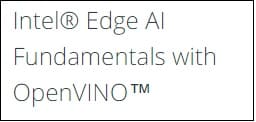
This course is the first big step towards a more complete program, and it is free. The OpenVINO toolkit is the software created by Intel to perform deep learning tasks on tiny hardware like the Intel Neural Compute Stick, and it is explored in this course. The characteristics of the course are as follows:
What you will learn:
- Leveraging Pre-Trained Models
- The Model Optimizer
- The Inference Engine
- Deploying an Edge App
Prerequisites:
- Basic Python experience
- Basic familiarity with computer vision and AI model creation
You can check out the course in this link – Intel Edge AI Fundamentals with OpenVINO – Udacity
Intel Edge AI for IoT Developers-Udacity

This is a nanodegree program that is related to the Intel Edge AI Fundamentals with OpenVINO (Full program) and we have to pay for it.This program is comprised of four courses and four projects and the goal of this course is to demonstrate knowledge of the tools taught throughout:
• The Intel Distribution of OpenVINO Toolkit
• The Model Optimizer
• The Inference Engine
• Edge applications
• MQTT
And the Prerequisites and Requirements are:
• Basic Python or C++ experience
• Basic familiarity with computer vison an AI model creation
You can check out the course in this link – Intel Edge AI for IoT Developers-Udacity
Fundamentals of TinyML-edX
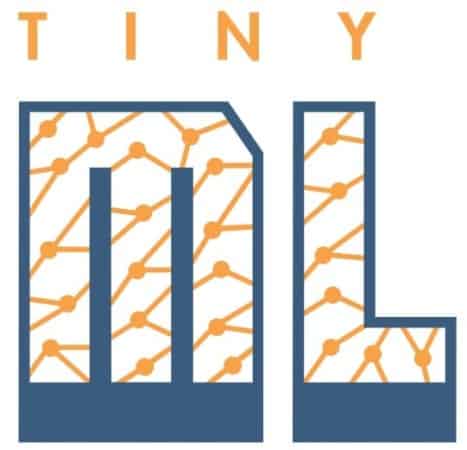
This course will give you the “basics” of machine learning as it is used in small machines at the edge of the network (Edge Ai) by introducing us to the TinyML “language” and it is free. We should start here because it is part one of a more complete paid program (Professional Certificate in Tiny Machine Learning).
What you will learn:
- Fundamentals of Machine Learning (ML)
- Fundamentals of Deep Learning
- How to gather data for ML
- How to train and deploy ML models
- Understanding embedded ML
- Responsible AI Design
Prerequisites:
- Basic Scripting in Python
You can check out the course in this link – Fundamentals of TinyML-edX
Applications of TinyML-edX
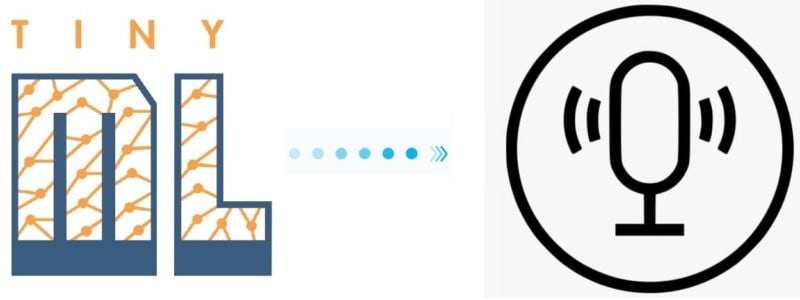
This is part two of a paid course (Professional Certificate in Tiny Machine Learning (TinyML)). This second course, which is free, dives into an array of applications where you will see how tools like voice recognition work in practice on small devices and you can see and implement common algorithms like neural networks.
What you will learn:
- The code behind some of the most widely used applications of TinyML
- Real-word industry applications of TinyML
- Principles of Keyword Spotting
- Principles of Visual Wake Words
- Concept of Anomaly Detection
- Principles of Dataset Engineering
- Responsible AI Development
Prerequisites and Requirements:
- Basic Scripting in Python
- Basic usage of Colab
- Basics of Machine Learning
- Basics of Embedded Systems
You can check out the course in this link – Applications of TinyML-edX
Deploying TinyML-edX
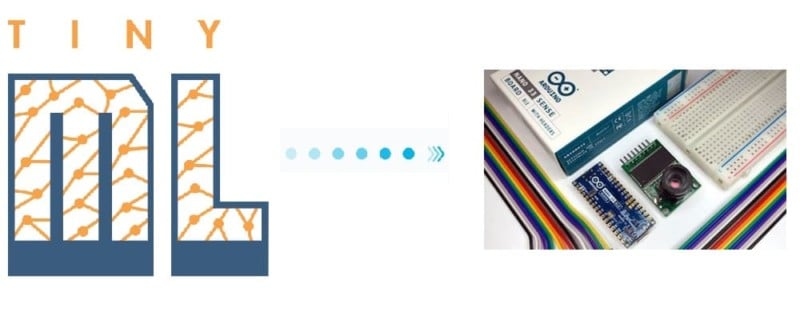
This course is also free. It is the last part where we can deploy machine learning models on an Arduino board—the TinyML Program Kit. For me, this is the more interesting option because if you have the kit, you can have a hands-on experience.
What you will learn:
- Fundamentals of machine learning, deep learning, and embedded devices.
- How to gather data effectively for training machine learning models.
- How to use Python to train and deploy tiny machine learning models.
- How to optimize machine learning models for resource-constrained devices.
- How to conceive and design your own tiny machine learning application.
- How to program in TensorFlow Lite for Microcontrollers.
Prerequisites:
- Fundamentals of TinyML
- Applications of TinyML
You can check out the course in this link – Deploying TinyML-edX
TinyML with Wio Terminal-Udemy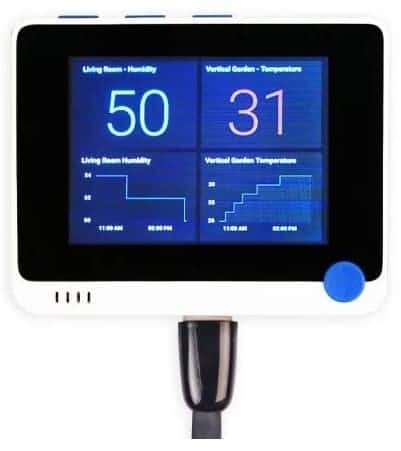
This paid course promises to help us learn TinyMl with Wio Terminal. It will start with the basics and go from there to advanced topics, all with a hands-on approach on Edge Ai topics. One of the inconveniences is that we need to purchase the hardware (Wio Terminal) if we want to participate in the practical exercices.
What you will learn:
-
- Learn with practical exercises that are relevant to your specific work environment.
- Master the fundamentals of machine learning to become a valuable asset in any organization.
- Learn the basics of Machine Learning, Neural Networks, and Deep Learning.
- How to optimize machine learning models for resource-constrained devices.
- Gain an understanding of the principles of neural networks, deep learning, and more
Prerequisites:
-
- You need to buy the Wio Terminal if you want to apply the practical experiments
- No prior coding experience needed
- Arduino IDE
- No prior knowledge required
You can check out the course in this link – TinyML with Wio Terminal-Udemy
Intro to Embedded Machine Learning – Udemy
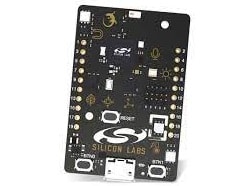
As with the previous paid course, we must purchase the hardware (Thunderboard TM Sense 2: IoT Development Kit) if we what to do the pratical exercices. It promises to deliver content related to Edge-Ai machine learning, but with only 45 minutes of course time… either way, it includes a project related to acoustic event detection that I found interesting. It is basically a process of detecting and classifying audio coming from a dog, a baby, etc.
What you will learn:
-
-
Embedded Systems
-
Machine Learning
-
TinyML
-
Embedded Machine Learning
-
IoT
-
Prerequisites:
You can check out the course in this link – Intro to Embedded Machine Learning – Udemy
Introduction to Embedded Machine Learning – Coursera

Now we arrive at one of my favorite free courses on this list. It covers the basics of Edge Ai machine learning with projects using a smartphone or an Arduino. A tool that is used is called Edge Impulse. It is an internet service that is free for makers with which we can train our neural networks.
What you will learn:
-
-
The basics of a machine learning system
-
How to use machine learning to make decisions and predictions in an embedded system
-
How to deploy a machine learning model to a microcontroller
-
Prerequisites:
-
- Some math (reading plots, arithmetic, and algebra) is required in the course
- Recommended to have experience with embedded systems (e.g. Arduino)
- Modern smartphone with a browser or Arduino Nano 33 BLE Sense
You can check out the course in this link – Introduction to Embedded Machine Learning – Coursera
Computer Vision with Embedded Machine Learning – Coursera

This is a free follow-up course to the previous one, and it focuses more on the Edge AI Machine Vision part of the Embedded Systems. It covers the concepts necessary to understand how CNNs operate and how to use them to classify images and detect objects. Again, we need to have the recomended hardware (OpenMV Camera) to better understand the concepts or simply use our laptop camera.
What you will learn:
-
- How to train and develop an image classification system using machine learning
- How to deploy a machine learning model to a microcontroller
- How to train and develop an object detection system using machine learning
Prerequisites:
-
- Some math (reading plots, arithmetic, and algebra) is required in the course
- Recommended to have experience with embedded systems (e.g. Arduino)
- Laptop computer with camera or the recomended OpenMV Camera
You can check out the course in this link – Computer Vision with Embedded Machine Learning – Coursera
Applied Edge AI: Deep Learning Outside of the Cloud
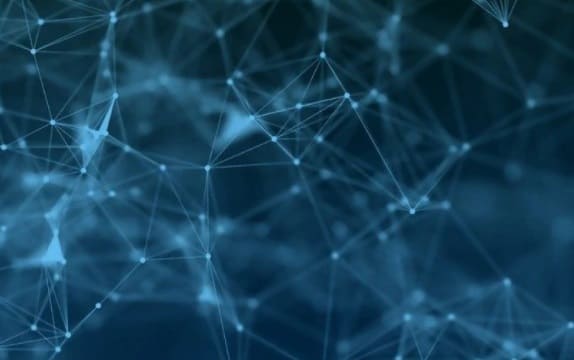
The last course is more advanced and expects us to have a little bit more of knowledge. It is a pilot project funded by the German Federal Ministry of Education and Research (BMBF) in 2019 and it is free!There is a lot of valuable content on this website in English for someone that likes to learn machine learning.
What you will learn:
-
- Summary of deep learning basics
- Deep model compression and optimization techniques
- Decentralized and collaborative deep learning
- Algorithms, software and hardware for Edge AI
Prerequisites:
-
- Basic understanding of Deep Learning
- Programming knowledge in Python
You can check out the course in this link – Applied Edge AI: Deep Learning Outside of the Cloud
